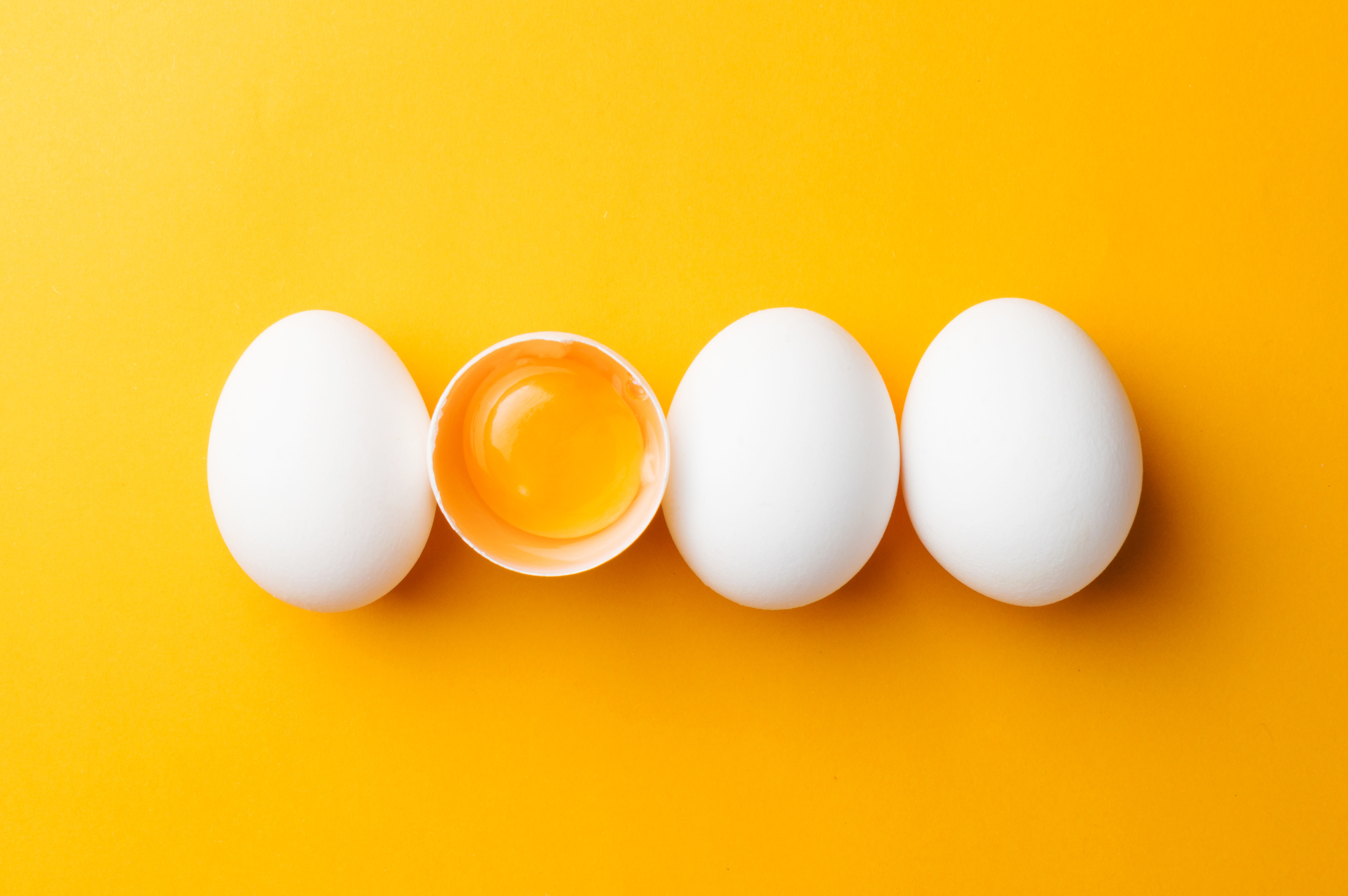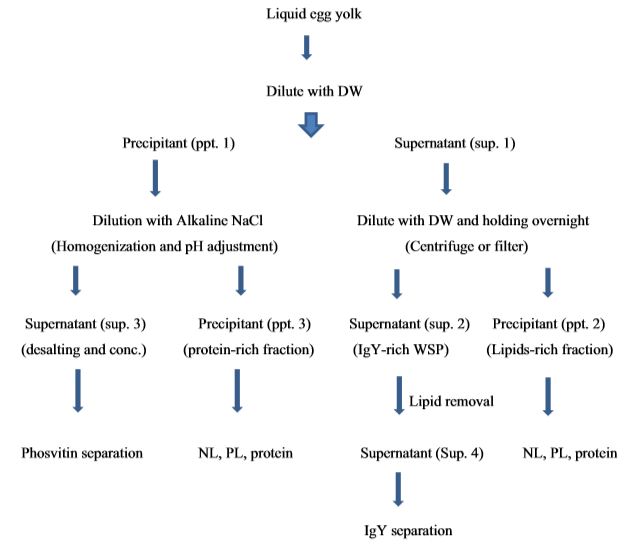



The surprising properties of egg yolk
Egg yolk as part of a healthy diet is a often hotly debated, but it contains many properties that make it useful in other applications, from cosmetics to medicines.According to research, the negative perception comes from the controversial belief that egg yolk cholesterol increases serum cholesterol levels in humans, thereby increasing the possibility of cardiovascular diseases. The value and use of egg yolk can be improved by fractionating egg yolk and separating functional proteins and lipids and developing them further into functional peptides and functional lipids. These can be used in several applications such as pharmaceutical products, functional foods and cosmetic health products. These approaches can diversify the use of egg yolk, ultimately increasing the consumption of the egg.

Egg and egg yolk facts
Fresh egg yolk is an excellent source of proteins, lipids, and phospholipids. This is largely due to its composition; egg yolk is: 50.1 percent water, 30.6 percent lipids, 17 percent proteins, 0.6 percent carbohydrates and 1.7 percent minerals (Stadelman & Cotterill, 1995).
The price of dried egg white tends to be much greater than that of dried yolk. This is due to high consumer demand for fat-free and cholesterol-free high-quality proteins from egg white compared to egg yolk. As described earlier, a negative perception of egg yolk results in relatively higher demand for egg white products, to avoid the “assumed” effects of egg yolk on cholesterol. However, studies show that egg cholesterol does not increase serum cholesterol in healthy people (Lemos et al, 2018).
To increase overall egg consumption, diversifying the applications for egg yolk is essential. Multiple products, which each have their uses in food processing, nutritional supplements, pharmaceuticals or cosmetics, can be separated from the egg yolk and used, either as they are or in a modified form.
"Egg yolks have several valuable properties that can be harnessed for diverse uses"
--
Common egg-yolk products
Egg yolk is mainly sold in a dried form, and only a small part of the egg yolk – less than 1 percent – is sold in a refrigerated liquid yolk or frozen form (Huang and Dong, 2019). The yolk has excellent coagulation or gelation and emulsifying properties, and thus, its products can be used as a fundamental ingredient for emulsifying, colouring, flavouring, coagulating and nutrition supplementing agents (Miranda et al, 2015).
The major uses of egg yolk products include mayonnaise, baking goods, noodles, creams, omelette, confectionery, sauces and salad dressing (Mannie, 2003). Egg yolk or whole-egg products produced from hens that have been immunised with specific antigens are also used to prevent or cure specific diseases in animal production and aquaculture – although in this respect their use is limited (Lu et al, 2008). It has also been suggested (Kiosseoglou, 2003) that due to the egg yolk’s complicated composition and structural characteristics, its functional properties have not been explored extensively.
Established and potential uses of egg-yolk components
Egg yolks have several valuable properties that can be harnessed for diverse uses. Yolk can easily be separated into two parts: granules and plasma. The plasma fraction contains 78 percent of the yolk’s dry matter and granules 22 percent. The plasma is mainly low-density lipoproteins (LDLs, 85 percent) and livetins (15 percent), while the granule part is mainly composed of proteins (60 percent) and lipids (34 percent) (Huang and Dong, 2019). Both fractions have high emulsifying properties. Figure 1 (below) shows a possible separation method that might potentially produce value-added products.
The following list of applications (harvested from several studies) gives a sense of the range of the possible uses and products that can be developed from egg yolk:
- as an ingredient for cosmetic cream formulations;
- its granule fraction can be used as a low-cholesterol replacement for whole-egg yolk in the preparation of muffins;
- its plasma fraction can be applied as a gelling and cryoprotecting agent due to its high LDL content;
- the plasma fraction is a source of phospholipids due to its high lipid content;
- the granule fraction’s functional proteins can be used as the starting material for immunoglobulin Y (IgY) extraction, and a source of functional peptides. The major applications for IgY are focused on the control of enteric infections such as Salmonella spp., enterotoxigenic E. coli, Campylobacter jejuni, porcine transmissible gastroenteritis virus, rota virus, porcine epidemic diarrhoea virus, influenza viruses and pathogen control in food products (Kumaran et al, 2018).
- Phosphoprotein phosvitin can be used in the production of proinflammatory mediators. It can also be used as a preservative and an emulsifier or emulsion stabiliser.
- Phosphatidylcholine from egg yolk plays a role in the functioning of membranes and nerve cells and can be used in infant formula for brain development.

Bioactive proteins and peptides
The separated proteins such as IgY and phosvitin can be used to produce bioactive peptides and used in areas such as nutrition supplements, bioactive cosmetics and pharmaceutical areas (Thibodeau et al, 2017). Phosphopeptides from phosvitin are important components used in the production of pharmaceutical products, functional foods, and cosmetic health products (Moon et al, 2014). Phosvitin has a great capacity for metal chelation which gives it strong antioxidant potentialities.
"Bioactive ceramide can be used as a therapy to arrest growth or promote apoptosis, especially for cancer cells"
--
Bioactive lipids
The separated phospholipids from egg yolk can also be used as agents in nutritional supplements or pharmaceuticals to improve fertility, maintain pregnancy, stimulate cell proliferation and cell growth, promote apoptosis and treat or prevent various diseases including cancers (Bieberich, 2012). In animals, supplementing broiler diets with phospholipid enhances fat digestibility (Zavareie and Toghyani, 2018). Sphingomyelin can be used to produce bioactive lipid ceramide; ceramide can be used as a therapy to arrest growth or promote apoptosis, especially for cancer cells (Kolesnick, 2002).
Prospective use of egg yolk and its components
Egg yolk can be an excellent starting material, to produce new functional products that can be used as ingredients for health products. For more diverse uses, further studies on bioactive peptides should be focused on all the peptides in the hydrolysate processes, rather than individual peptides.
The separation methods limit the application of bioactive lipids in industries such as the nutraceutical and pharmaceutical sectors. However, bioactive peptides and bioactive lipids have significant opportunities in the animal feed, agri-food and human health-related industries. With effective separation methods to isolate the value-added components (such as bioactive proteins and lipids) from egg yolk, developing new products from the yolk could be an effective way to increase both egg-yolk consumption and the consumption of eggs overall.









